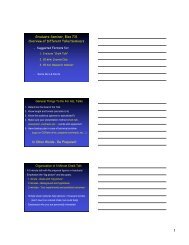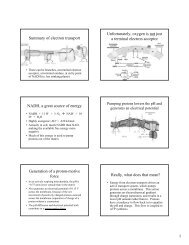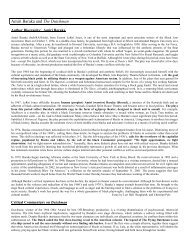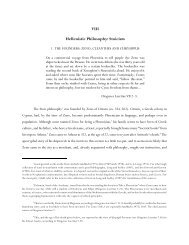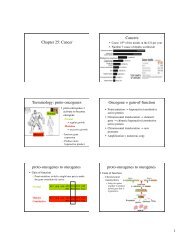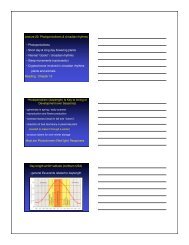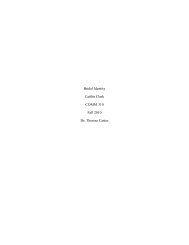V. VERB QUALITIES - UW-Parkside: Help for Personal Homepages
V. VERB QUALITIES - UW-Parkside: Help for Personal Homepages
V. VERB QUALITIES - UW-Parkside: Help for Personal Homepages
You also want an ePaper? Increase the reach of your titles
YUMPU automatically turns print PDFs into web optimized ePapers that Google loves.
(22) I <strong>for</strong>got to go to the bank.<br />
(23) I hate going to the bank, but I hate to <strong>for</strong>get stuff, too.<br />
(24) You start <strong>for</strong>getting stuff, and you start to lose it.<br />
(25) I want to tell you I love you.<br />
EXERCISE 5.04: Modals--Identify any modal auxiliaries or quasi-modal<br />
constructions in the following sentences. How do they affect the<br />
meaning of the main verb?<br />
1) I shall return.<br />
2) I should have been a pair of ragged claws.<br />
3) I have to go to the symphony tonight.<br />
4) I must have been mistaken.<br />
5) I am going to kill that guy one of these days.<br />
6) I have known him <strong>for</strong> many years.<br />
7) I can see clearly now.<br />
8) I would like to take you out tonight.<br />
9) I may be giving you a ring later.<br />
10) I could not love you more than today I do.<br />
11) I might have known he would betray me.<br />
12) I used to talk to him on MySpace.<br />
13) I was going to tell you eventually.<br />
14) I need to write myself a note.<br />
15) I will try again tomorrow.<br />
Progressive Aspect<br />
English inflects its verbs only <strong>for</strong> the past and present tense, and it <strong>for</strong>ms its “future” tense by<br />
using the modal auxiliary will. One often encounters references to additional tenses, the<br />
“present progressive,” “the past perfect,” and so on. These “tenses” actually combine a true<br />
tense (present or past) with an aspect of the verb, though we need not be quite that<br />
technical in our discussion here. The progressive and perfect aspects are <strong>for</strong>med by<br />
combining verb <strong>for</strong>ms we encountered in our earlier discussion of interrogative sentence<br />
<strong>for</strong>m, the primary auxiliaries and verb participles.<br />
Progressive aspect of a verb is signalled by be as a primary auxiliary, followed by the<br />
present participle (or ing-participle) of the next verb.<br />
We have one more use <strong>for</strong> the ing-participle of verbs; when preceded by a <strong>for</strong>m of be<br />
(including the past participle been), the ing-participle signals progressive aspect<br />
If the main tense of the sentence is present, then we have the present progressive; if it is<br />
past, we have the past progressive. Some students have difficulty in understanding that<br />
you can have a past progressive <strong>for</strong>med by a present participle. Try to remember that<br />
whether it is present or past depends on the tense of the first auxiliary verb--was drinking in<br />
sentence (2) is past progressive even though it has a "present" participle:<br />
(1) The ship is heading into a storm. [PRESENT<br />
PROGRESSIVE]<br />
118




